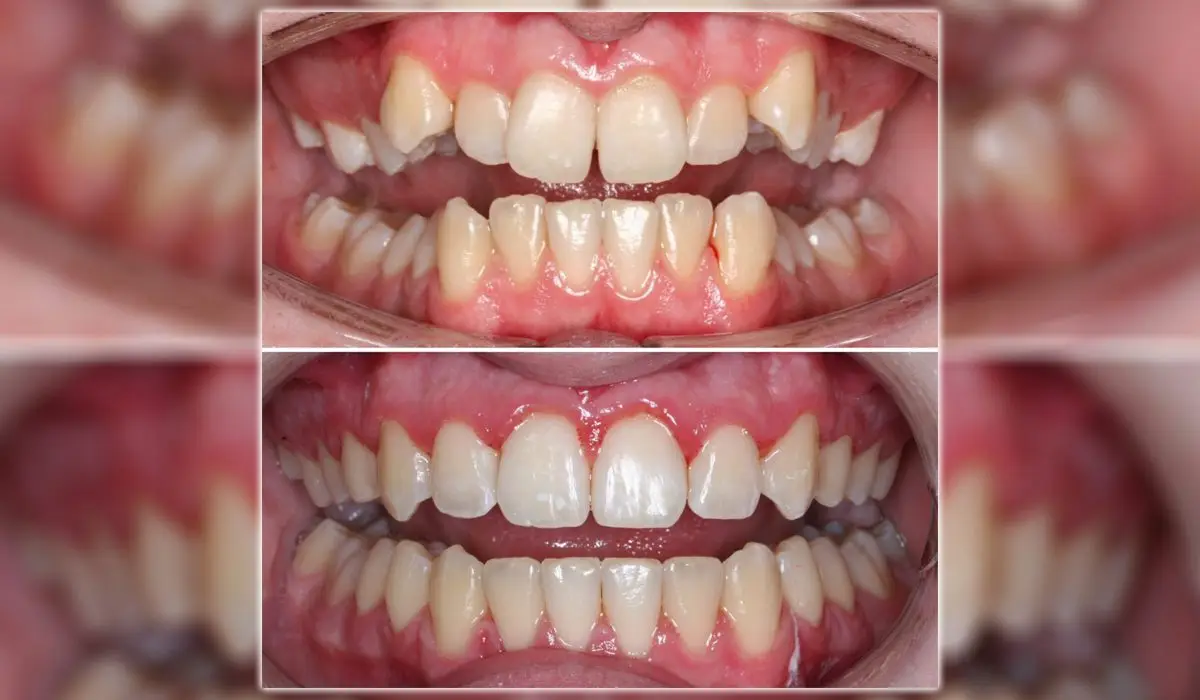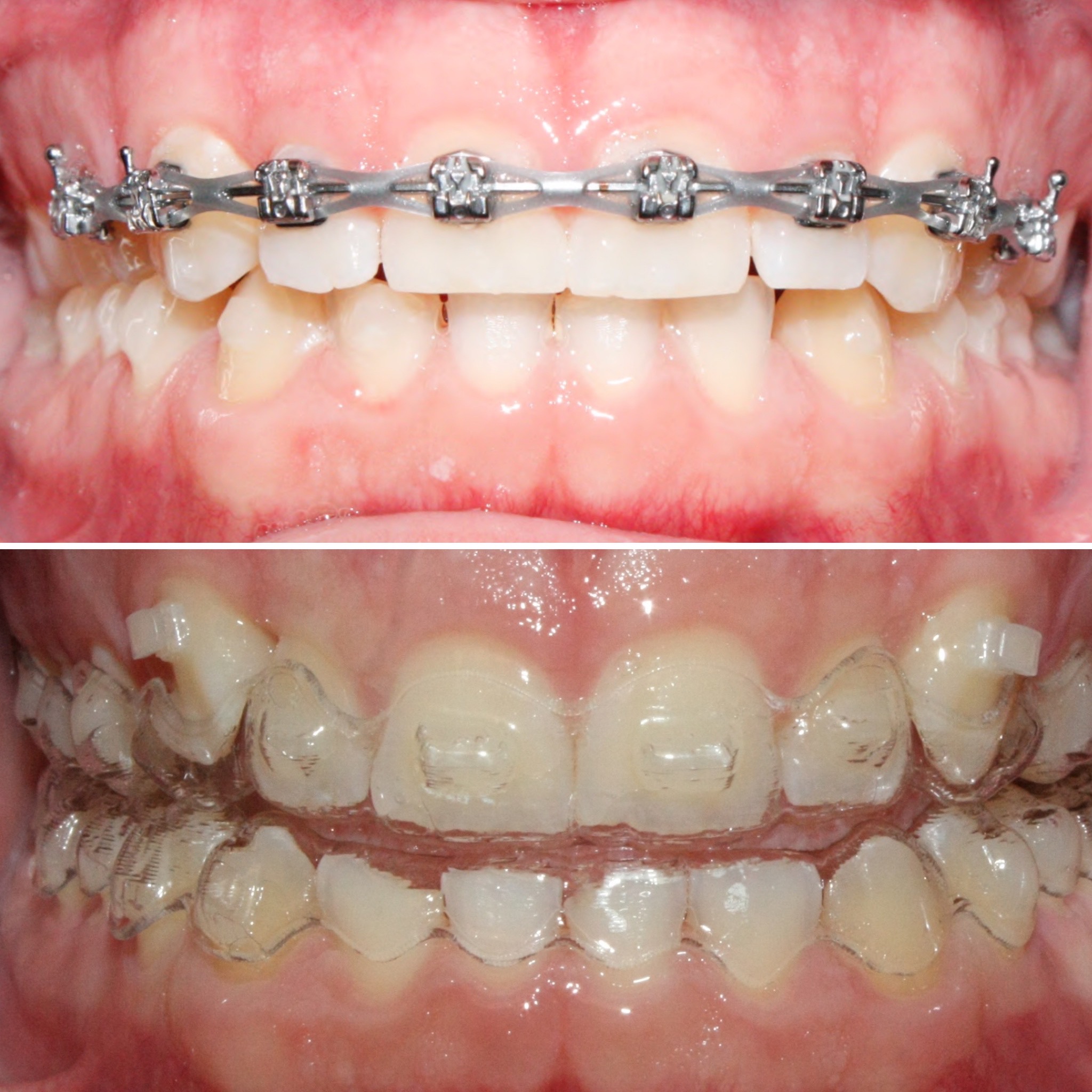Invisalign for Teens: A Modern Solution to Straightening Young Smiles
Invisalign for Teens: A Modern Solution to Straightening Young Smiles
Blog Article
Invisalign vs. Conventional Dental braces: Which Alternative Is Right for You?
When considering orthodontic treatment, the option between Invisalign and standard dental braces offers several important elements that warrant cautious analysis. Invisalign offers a discreet alternative with removable aligners, while conventional braces supply a much more noticeable yet efficient option for serious imbalance. Each option encompasses distinct advantages and downsides associated with looks, convenience, treatment duration, and cost. Understanding these nuances is crucial for making an informed choice that straightens with your individual choices and way of life. The concern remains: which option will ideal fulfill your orthodontic requirements and expectations?
Review of Therapy Options

On the other hand, traditional braces contain steel brackets and cables that are adhered to the teeth. This method applies constant stress over time to accomplish placement. While reliable for complex orthodontic problems, standard dental braces require regular sees for adjustments and can position difficulties in keeping dental hygiene due to the problem of cleansing about brackets and wires.
Both choices have their qualities, and the choice frequently depends upon certain oral problems, way of living choices, and patient compliance. Ultimately, seeking advice from an orthodontic specialist is critical for determining the most suitable treatment plan customized to specific needs. Understanding the subtleties of each alternative can significantly influence the total success of orthodontic treatment.
Visual Factors To Consider
A significant variable affecting the option between Invisalign and conventional braces is the aesthetic allure each therapy uses. Invisalign aligners are crafted from clear plastic, making them essentially undetectable when used. This discreet appearance is specifically interesting grownups and teens that might feel self-conscious about their orthodontic treatment. The capacity to maintain a natural smile throughout the positioning process can significantly boost the person's self-confidence in social and expert settings.
On the other hand, conventional dental braces contain steel brackets and cords, which can be much more noticeable. While improvements in orthodontic technology have actually led to the growth of smaller braces and tinted elastics, conventional dental braces still maintain an even more conspicuous profile. For some people, the exposure of dental braces may prevent them from looking for required therapy.
Ultimately, the option in between Invisalign and conventional dental braces may hinge on individual choices relating to aesthetic appeals. People who focus on discernment typically lean towards Invisalign, while those who are less concerned concerning visibility may select typical braces. Comprehending the visual effects of each option is important for making an educated choice that aligns with one's way of life and choices.
Convenience and Convenience

In regards to ease, Invisalign aligners are detachable, allowing patients to appreciate their preferred foods without restriction and keep ideal oral health. Cleaning and flossing are simplified, as the aligners can be obtained throughout these routines, whereas typical braces require mindful navigating around wires and braces.
Furthermore, Invisalign's progressive system permits fewer orthodontic brows through. Individuals typically obtain several collections of aligners simultaneously, which can streamline the treatment procedure and minimize time invested in the orthodontist's chair. On the other hand, conventional dental braces require normal adjustments, making them much less practical for those with active routines. Invisalign. On the whole, the comfort and ease of Invisalign make it an appealing selection for many people looking for orthodontic treatment.
Therapy Duration and Effectiveness
While both Invisalign and typical braces work in dealing with dental misalignments, the duration of therapy can differ significantly between both alternatives. Typically, Invisalign treatment can take anywhere from 12 to 18 months, depending upon the intricacy of the case. The clear aligners work by progressively changing teeth right into their wanted positions, and regular follow-ups with an orthodontist help guarantee development stays on course.
On the other hand, typical dental braces frequently require a longer commitment, typically ranging from 18 months to three years. This is due to their fixed nature and using brackets and wires, which can be more effective for severe misalignments and intricate instances (Invisalign). visite site The therapy efficiency of traditional braces is well-documented, as they allow for exact changes and better control over tooth activity
Eventually, the option between Invisalign and conventional braces might pivot check out here on both the expected treatment period and the details oral problems at hand. Consulting with an orthodontist is essential, as they can provide customized referrals based on individual demands, making certain the selected method straightens with wanted durations and results.
Cost Contrast and Insurance Coverage Options
Price plays a considerable role in the decision-making procedure for individuals considering orthodontic therapy, whether going with Invisalign or traditional dental braces. Usually, the price of Invisalign varieties from $3,000 to $8,000, while traditional dental braces generally set you back between $2,000 and $6,000. Factors affecting these costs include the intricacy of the situation, the period of treatment, and geographical area.
Insurance insurance coverage can substantially impact out-of-pocket costs. Numerous oral insurance coverage strategies offer partial coverage for orthodontic treatments, yet the specifics can vary extensively. It is essential for people to evaluate their insurance plan to figure out the level of coverage for either choice. Usually, conventional dental braces might be much more regularly covered by insurance policy plans compared to Invisalign, which some insurance firms categorize as a cosmetic treatment.
In addition, numerous orthodontic techniques offer flexible layaway plan, making both treatment choices a lot more obtainable. People should inquire about potential financing choices and discount rates for ahead of time settlements. Examining the complete expense, consisting of insurance coverage benefits and layaway plan, is important for making an informed decision that straightens with both visual choices and budget plan considerations.

Final Thought
In summary, the choice between Invisalign and traditional braces depends upon numerous variables, consisting of aesthetic preferences, comfort, therapy period, and expense. Invisalign provides a discreet, detachable choice that assists in oral hygiene and nutritional versatility, while conventional braces might be a lot more appropriate for complex oral concerns and commonly come at a lower rate point. Ultimately, appointment with an orthodontist is vital to examine individual circumstances and figure out the most appropriate therapy option for attaining ideal dental positioning.
When thinking about orthodontic therapy, the option in between Invisalign and typical braces offers a number of important aspects that merit mindful assessment.Contrasting Invisalign and conventional dental braces reveals distinctive treatment alternatives for orthodontic adjustment.While both Invisalign and typical braces are reliable in correcting oral misalignments, the duration of therapy can vary dramatically between the 2 options.Expense plays a substantial function in the decision-making procedure for people thinking about orthodontic therapy, whether opting for Invisalign or standard dental braces.In summary, the option in between Invisalign and conventional dental braces hinges on several variables, including aesthetic choices, convenience, therapy period, and expense.
Report this page